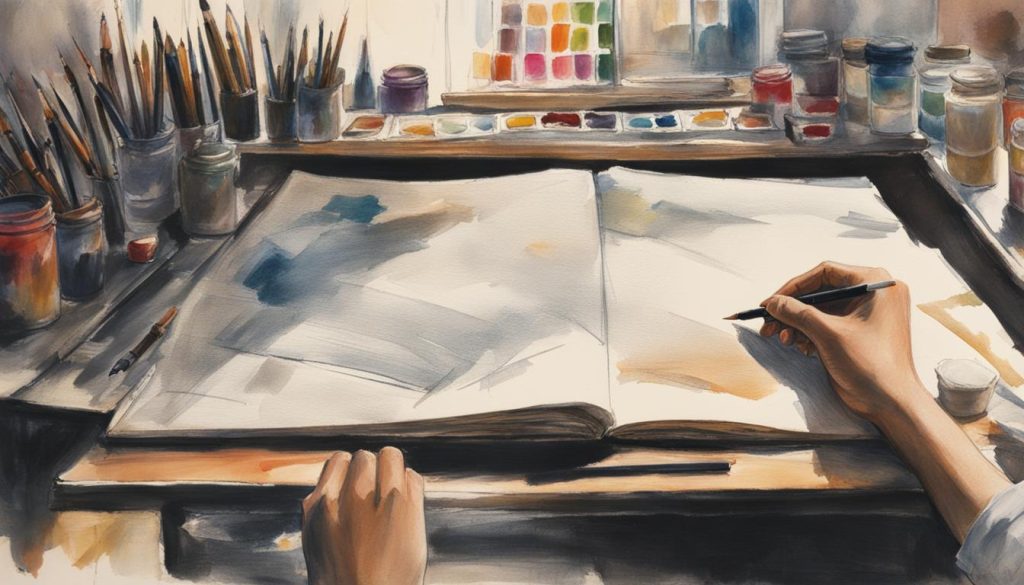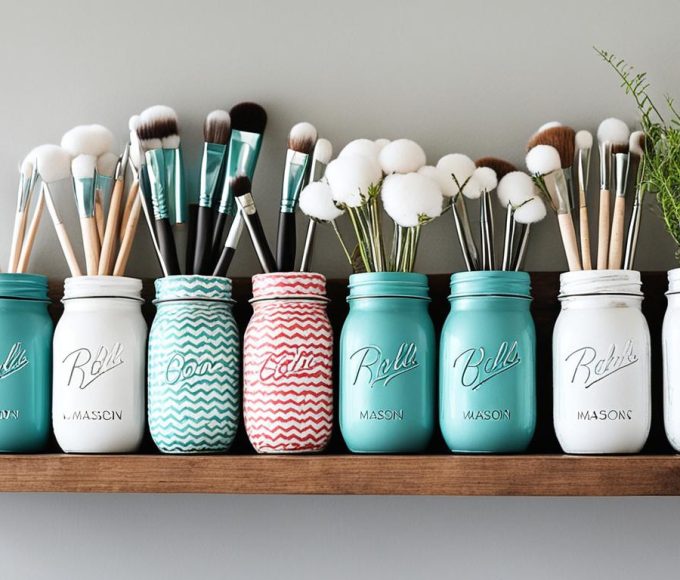If you’re looking for a new way to unleash your creativity, starting a sketchbook journal could be just what you need. Whether you’re a seasoned artist or someone who just loves to doodle, a sketchbook can be a great tool for self-expression and reflection.
In this beginner’s guide to sketchbook journaling, we’ll walk you through the essential steps and techniques for getting started with this practice. By the end of this article, you’ll have the knowledge and inspiration you need to develop a sketchbook journaling habit that works for you.
Before we dive in, let’s define what we mean by sketchbook journaling. Simply put, it’s a way of combining writing and drawing in a single notebook. Some people use their sketchbook to document their daily life, while others use it for brainstorming and exploring new ideas.
No matter what your goals are for starting a sketchbook journal, the most important thing is to approach it with an open mind and a willingness to experiment. Let’s get started!
Embrace Your Creativity
Sketchbook journaling is not just a hobby; it’s an opportunity to unleash your creativity and explore the world around you. There are numerous benefits to starting a sketchbook journal, including:
- Improving your observation and drawing skills
- Relieving stress and anxiety
- Documenting memories and experiences
- Developing a personal style
If you’re feeling unsure or intimidated about starting a sketchbook journal, take inspiration from the world around you. Look for beauty in everyday life, whether it’s a sunlit flower blooming in the park or the intricate details of a building facade. Remember, inspiration is everywhere if you’re open to seeing it.
The Power of Sketchbook Journaling
When you embrace your creativity through sketchbook journaling, you can tap into a powerful source of self-expression and growth. Your journal can become a reflection of your thoughts, feelings, and experiences, allowing you to explore and understand yourself on a deeper level. Don’t be afraid to experiment, try new techniques, and break free from your comfort zone. The beauty of sketchbook journaling is that it’s entirely personal, and there are no rules or expectations.
So, grab your sketchbook and let your creativity flow. With each stroke of your pen or pencil, you’re one step closer to discovering your unique artistic voice.
Gathering Essential Supplies
Before you dive into sketchbook journaling, it’s important to gather the essential supplies to make the most of your experience. Here are some of the must-have materials you’ll need to bring your ideas to life on paper:
Sketchbook:
First and foremost, you’ll need a high-quality sketchbook that can withstand various mediums. Choose one with sturdy paper that won’t bleed or smudge easily. A standard size of 8.5×11 inches is usually a good place to start.
Drawing Tools:
Next, choose your preferred drawing tools. Pencils are a popular choice for sketchbook journaling, but don’t be afraid to experiment with pens, markers, or even watercolors. Just be sure to choose high-quality tools that are comfortable to hold.
Erasers and Sharpener:
Don’t forget to include an eraser and sharpener in your essential supplies. An eraser will allow you to make corrections and adjustments to your sketches, while a sharpener will keep your pencils in tip-top shape.
Ruler and Compass:
For precise lines and measurements, consider including a ruler and compass in your toolkit. These tools can help you create straight lines, circles, and other geometric shapes with ease.
By having these essential supplies on hand, you’ll be well-equipped to start your sketchbook journaling journey with confidence. Remember, the key to successful journaling is to experiment and have fun with your creativity!
Choosing the Right Sketchbook
Now that you have gathered all the essential supplies, it’s time to choose the right sketchbook for your needs. The sketchbook you choose will play a significant role in shaping your journaling experience, so it’s essential to take the time to consider your options carefully.
Consider Your Preferences
When selecting a sketchbook, it’s important to consider your personal preferences. Do you prefer a blank or lined sketchbook? Do you prefer a larger or smaller size? Do you prefer a hardcover or softcover?
Think about the type of journaling you want to pursue and choose a sketchbook that suits your preferences and needs.
Consider the Paper Quality
The quality of the paper is another crucial factor to consider when choosing a sketchbook. Look for a sketchbook with high-quality, acid-free paper that will hold up well to different media.
If you plan on using watercolors or other wet media, look for a sketchbook with thicker paper to prevent bleeding and warping.
Consider Your Budget
Sketchbooks come in a wide range of prices, so it’s important to consider your budget when selecting a sketchbook. While some high-end sketchbooks may have superior paper quality, there are also plenty of affordable options that offer great value.
Consider how often you plan on journaling and how much you’re willing to spend on a sketchbook. Keep in mind that a sketchbook is an investment in your creativity, so it’s worth investing in a quality product.
Take Your Time
Choosing the right sketchbook is a personal decision that requires careful consideration. Take your time when selecting a sketchbook and don’t rush the process.
Visit your local art supply store and browse through different options. Don’t be afraid to touch and feel the sketchbooks and test the paper quality. Look for online reviews and recommendations from other artists to help guide your decision.
Remember, the sketchbook you choose will be your creative companion for weeks, months, or even years to come. So choose wisely, and enjoy the journey!
Getting Started with Sketchbook Journaling
Starting a sketchbook journal can be an exciting and rewarding experience. But with so many techniques and materials to choose from, it can be overwhelming to know where to begin. Here, we provide you with tips and valuable advice on how to get started with sketchbook journaling.
1. Start with a Simple Sketchbook
When starting a sketchbook journal, it’s best to begin with a simple sketchbook. Don’t feel like you need to invest in an expensive notebook right away. Instead, start with a basic, unlined notebook that has thick paper. This will allow you to experiment with different materials and techniques without worrying about ruining the pages.
2. Use Your Journal as a Creative Outlet
Your sketchbook journal is a space where you can let your creativity run wild. Don’t be afraid to experiment with different materials and techniques. Use it as an opportunity to explore your artistic style and express yourself.
3. Draw Inspiration from Your Surroundings
One of the best ways to get started with sketchbook journaling is to draw inspiration from your surroundings. Take your journal with you wherever you go and sketch what you see around you. It could be a beautiful landscape, an interesting object, or even a person you see on the street. Use your journal to capture the beauty and diversity of the world around you.
4. Make Time for Journaling
Consistency is key when it comes to sketchbook journaling. Set aside a specific time each day or week to work on your journal. Whether it’s a few minutes or a few hours, making time for your creativity is important. Consider journaling as a daily habit to help you develop your skills and improve your technique.
5. Experiment with Different Techniques
One of the best things about sketchbook journaling is that there is no right or wrong way to do it. Experiment with different techniques and materials to find what works best for you. Try drawing with pencils, pens, markers, or even watercolors. Incorporate collage, mixed media, and other techniques to make your journal unique.
6. Don’t Worry About Perfection
Sketchbook journaling is not about creating perfect, polished artwork. It’s about expressing yourself and exploring your creativity. Don’t worry about making mistakes or creating something that doesn’t look perfect. Embrace imperfection and use your journal as a space to practice and improve your skills.
With these tips and techniques, you can confidently begin your sketchbook journaling journey. Remember to make time for your creativity and have fun with it. Happy journaling!
Exploring Different Techniques
Sketchbook journaling is a versatile medium that can be explored through various techniques. With every new technique, you’ll discover new ways to express yourself creatively. By experimenting with different tools and mediums, you will develop your style and find what resonates with you the most.
Basic Sketching:
Sketching is one of the most fundamental techniques in sketchbook journaling. It’s a great way to capture the essence of a subject through quick, expressive lines. Try using different pencils and pens to see how they affect your lines and shading.
Watercolor:
Watercolors are a beautiful medium that are perfect for capturing the natural world around you. They’re easy to use, portable, and great for adding vivid colors to your sketches. Try experimenting with different brushes and techniques like wet-on-wet and wet-on-dry to add depth and texture to your watercolor sketches.
Ink:
Ink is a versatile medium that can be used for fine lines, crosshatching, and shading. You can use a variety of pens and nibs to achieve different effects. Ink also looks great when combined with watercolor or colored pencils.
Mixed Media:
Combining different mediums and techniques can bring your sketchbook journaling to a whole new level. You can create collages, add textures, and experiment with different color schemes. Try using different papers like tissue paper or magazine clippings to add depth and interest to your pages.
Overall, there is no right or wrong way to approach sketchbook journaling. The key is to experiment with different techniques and find what works for you. By exploring new techniques and mediums, you’ll uncover new ways to express your creativity and connect with the world around you.
Capturing Ideas and Inspiration
Keeping your creativity flowing is essential when starting a sketchbook journal. One of the best ways to do this is to capture your ideas and inspiration. Here are some tips to help you get started:
Use Your Senses
Take the time to observe your surroundings with all your senses. What do you see, smell, hear, touch, and taste? These observations can help you create vivid and detailed sketches that capture the moment and your emotions.
Keep a Record
Carry a small notebook with you to jot down ideas and inspiration as they come to mind. You can also use your phone to take pictures or record voice memos.

Participate in Challenges
Participating in challenges is a great way to stay motivated and connect with other artists. Several art challenges, such as Inktober or #OneWeek100People, encourage artists to create and share their work on social media platforms like Instagram. These challenges offer a fun and collaborative space to showcase your skills and engage with other creatives.
Host an Exhibition
If you’re confident in your work and want to share it with a wider audience, consider hosting an exhibition. You can showcase your sketchbook journals at a local gallery or community space and invite friends, family, and other artists to attend. Hosting an exhibition provides an opportunity to receive feedback, connect with other artists, and potentially sell your work.
Remember, sharing your sketchbook journaling journey is entirely optional and up to you. You can choose to keep your work private or share it with others as you see fit. Regardless of your decision, continue creating and exploring your creativity!
Troubleshooting and Maintenance
Starting a sketchbook journal can be an exciting and rewarding experience, but it can also come with its share of challenges. Here are some common issues that may arise and tips to help you troubleshoot and maintain your sketchbook:
Problem: Lack of Inspiration
Tip: Try exploring new subjects or techniques that you haven’t tried before. You can also take a break from your sketchbook and go outside for a walk or visit a museum for fresh inspiration.
Problem: Creative Block
Tip: Don’t be too hard on yourself and take a break if needed. Try experimenting with different materials or techniques or revisit old sketchbook entries for ideas.
Problem: Messy Pages
Tip: Use a piece of scrap paper to protect your pages while working with wet media. You can also try using fixative or spray to prevent smudging or transfer of colors.
Problem: Pages Sticking Together
Tip: Use a small amount of powdered graphite or talcum powder between pages to prevent them from sticking together.
Problem: Running Out of Space
Tip: Consider using a larger sketchbook or creating a series of smaller sketchbooks. You can also remove completed pages or use them as collage material for future entries.
Problem: Damaged Sketchbook
Tip: Store your sketchbook in a dry and cool place away from direct sunlight or moisture. You can also reinforce the spine or cover with tape or bookbinding glue if needed.
By addressing these issues and maintaining your sketchbook, you can ensure that your journaling practice remains a valuable and enjoyable experience. Remember to have fun and be patient with yourself as you continue to develop your skills and creativity.
Conclusion and Final Thoughts
Congratulations on taking the first step towards starting a sketchbook journal! We hope that this beginner’s guide has provided you with valuable information and inspiration to develop a journaling habit and explore your creativity.
Remember, starting a sketchbook journal is a process, and it’s important to give yourself time to experiment and grow. Don’t be discouraged by creative blocks or setbacks; instead, use them as an opportunity to learn and develop your skills.
Final Tips
Here are some final tips to keep in mind:
- Make journaling a habit by setting aside dedicated time each day or week.
- Experiment with different techniques and materials to find what works best for you.
- Capture inspiration and ideas by keeping a sketchbook or notebook with you at all times.
- Don’t be afraid to share your work with others and seek feedback.
- Take care of your sketchbook by storing it properly and using high-quality materials.
We hope that you enjoy your sketchbook journaling journey and continue to develop your skills and creativity. Remember, the most important thing is to have fun and enjoy the process!
Thank you for reading this guide on how to start a sketchbook journal. We wish you all the best in developing a sketchbook journaling habit and exploring your artistic potential.







